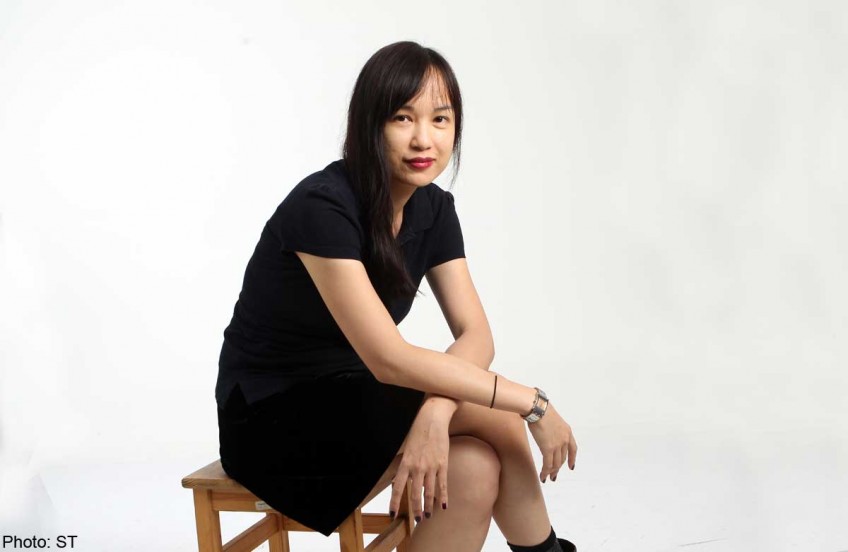It’s tough trying to die carefully


I hold my head to feel the skull beneath the skin.
To press pass the flesh flushed with life and get close to the bone of the matter.
For quite some time now, I have wanted to complete an Advance Medical Directive, but how do I get to the right headspace to do it?
The directive is a legal document that you sign in advance to inform the doctor treating you that you do not want any extraordinary life-sustaining treatment to be used to prolong your life - this is in the event that you become terminally ill and unconscious.
The two-page form looks simple enough. Just fill in the spaces with the most basic of personal details and get the signatures of witnesses. Heck, signing up for online services or shops with their reams of terms and conditions, and their requests for my vital statistics, blood type and genome sequence would shorten my life way more than the form would. Yet, it has taken me years to shift into the right frame of mind to get to grips with filling up the form.
Despite the certainty of dying, there is no equal certainty that we will prepare for it.
While major experiences in life, such as marriage, sex, children and work, are not dead certain to flow our way, many of us burn much time and energy yearning and preparing for them. In contrast, every last one of us will drink from the cup of death, yet many of us donot pause long enough to think about whether we want doctors to help delay that final sip. Perhaps the obvious reason that most of us do not do so is because we dread thinking about giving up the ghost.
Time after time, I have satdown to try to get my end-of-life affairs in order, but it is terribly difficult to do so when there is no clear and present danger of serious ill health (Touch wood/choy! Talking about dying feels like I am tempting fate).
Why torment myself now? On the Ministry of Health website, it says it is actually best to make an Advance Medical Directive when there is no pressure to do so - when you are well and healthy. That feels right. I wantto reach into the future to offer my dying self a steadying hand with the directive.
So I artificially crank up the pressure on myself and play a mind game that I once did as a child, freaking myself out by visualising my skeleton moving within my body. Clutch a changkul (hoe, in Malay) - well, it should be a scythe but I have seen only changkuls in real life - and it is the very image of the Grim Reaper. I wanted to remind myself that death had been seeded within us from the second we were born.
However, the morbid thoughts do not bear fruit and I put the form away for another day. I prefer to turn from the darkness of the subject and twist towards the light - the one shining from the TV and computer. Fatalities are on the other side of the TV and computer screens: news reports of tragic wars, terrifying viral diseases and celebrity suicides. Even when it hits close to home, death is still what happens to other people, of course.
Perhaps some of us do not delve into the nitty-gritty of death because there is the peace that comes with a solid religious or traditional family structure for some; the cradle-to-grave decisions have already been given specific shapes and meanings by the structures and the promise of a hereafter.
What about people who live outside of religions or traditions? Does this mean some of us will create our own death rituals?
Filling out an Advance Medical Directive form, doing advance care planning - in which a patient decides on his end-of-life care - appear to be official chores that are as dry as dust. However, looking at these steps from the viewpoint of a non-religious person, the whole starts becoming greater than the sum of its parts; one can start to think of them as talismans against too much pain, secular prayers for peace at a time of dying.
They have the force and presence of a modern death ritual.
I find that, contrary to my uneasiness that thinking about the end will give the skull under my skin reason to grin, these practical steps start to offer some vague semblance of control over the dying process. A defence against definite darkness.
Going further, will assisted suicide and euthanasia - both not legal in Singapore and not related to the Advance Medical Directive - one day be part of a future version of that defence? It is so difficult to try to die a little more carefully and comfortably. To hold death closer, so that when the Grim Reaper appears, it will be, no, not a friend, but at least a sort of ghastly colleague.
Last week, I opened my letter box and found a Health Ministry letter acknowledging that my Advance Medical Directive had been registered.
And I went from holding my head in a bit of distress to holding my future death in my own hands.
denise@sph.com.sg

This article was first published on September 07, 2014.
Get a copy of The Straits Times or go to straitstimes.com for more stories.